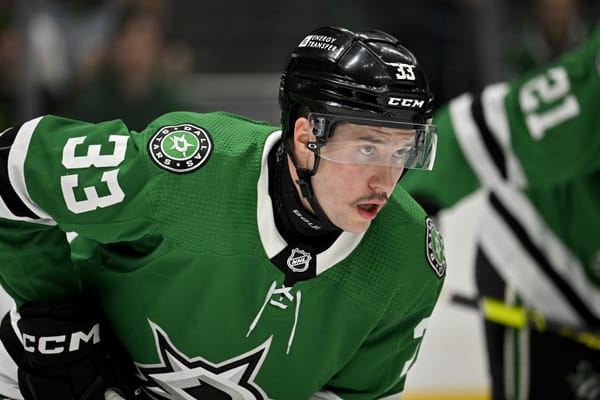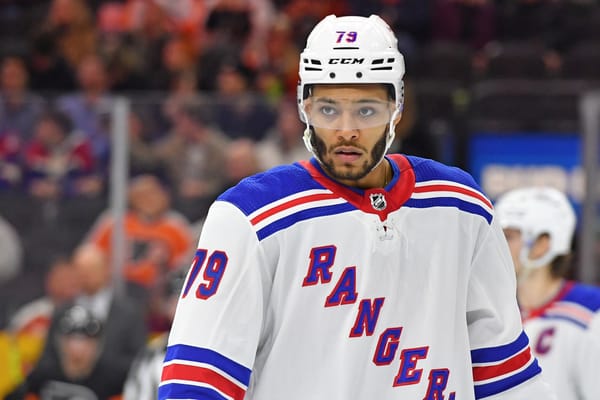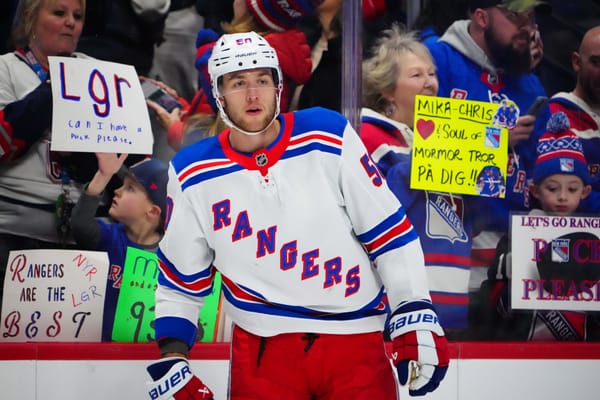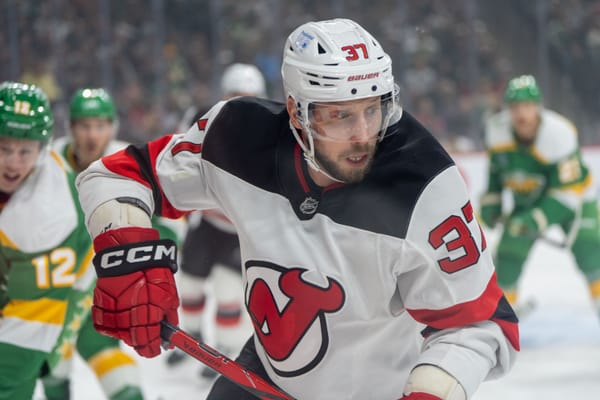2020 Report Card: Ryan Lindgren
Expectations
Defenseman Ryan Lindgren, acquired by the Rangers in the trade that sent Rick Nash to the Boston Bruins, was a second-round pick (49th overall) in the 2016 Draft. Before joining the Rangers organization, he played his college hockey at the University of Minnesota and appeared on two Team USA World Juniors rosters in 2016 and 2017. Lindgren earned a reputation as a physical presence with no bells and whistles in his game as a Golden Gopher and while wearing red, white, and blue.
He made his pro debut in 2018-19 season in the AHL with the Hartford Wolf Pack. In 65 games on a rough Hartford club that year, Lindgren piled up 94 PIM, scored zero goals, and notched 12 assists. So, he didn’t exactly stand out — then again, defense-first defenders rarely do. He didn’t show much more promise in the five games of NHL action he saw. But that was to be expected.
In September 2019, The Athletic’s Corey Pronman ranked Lindgren as the Rangers’ 23rd best prospect, just below Tarmo Reunanen, designating him in the “has a chance” tier. Our own Adam Herman ranked him as the 25th-best prospect in the system. So, expectations were modest for Lindgren heading into 2019-20. So much so that he was expected to spend another year working on his game in the AHL.
Performance
We all know that Adam Fox stole the show among the Rangers’ rookies and blueliners this year but he wasn’t the only kid on the blue line who exceeded expectations.
Lindgren didn’t make the roster out of camp that saw Brady Skjei, Marc Staal, and Libor Hajek emerge as the Rangers’ left-side defenders with sometimes-forward-I-guess Brendan Smith also in the mix. He made his season debut on Oct. 29 against Tampa, picking up an assist and clocking in with 15:04 of duty. One month later, he played over 20 minutes in a game against Montreal and had carved out a role for himself on the blue line.
“I can’t give him enough credit for what he’s done as a player,” David Quinn told LoHud’s Vince Mercogliano in November. “Everybody talked about competitive he was and how hard he was, but this guy has changed his body, he’s quicker, he’s more agile, he does a really good job getting us out of our end and he hasn’t lost his competitive edge. Boy, he’s really turned himself into a real good player in a short period of time.”
Lindgren finished the season with 14 points (1 G, 13 A), 47 SOG, 47 PIM, 94 hits, 70 blocked shots, and 16:04 TOI/GP in 60 games. That’s a solid stat line for a rookie defenseman who didn’t make the team out of camp.
Despite being on pace to crack 20 points in his rookie season, Lindgren is undoubtedly one-dimensional. He was dead-last among Rangers’ D in IPP (30.43) and eight of his 13 assists were secondary. That’s not necessarily a strike against him, because that has never been his game, but it warrants mention. The good news is that he can skate, which is definitely a valuable trait to have even if you are a stay-at-home defender.
Short-handed chance for Ryan Lindgren #NYR pic.twitter.com/6StLf4ul4j
— Shayna (@hayyyshayyy) January 20, 2020
Generally speaking, Lindgren is defensively sound but is still a work-in-progress. He was definitely a physical presence at this level, which was an encouraging sign after he adapted well to the AHL last year from NCAA DI hockey. The fact that he led the blue line in hits taken (113) and minor penalties taken is evidence that his game needs some polish. But he did finish in the green in penalty differential and, going by the eye test, was second only to Trouba in terms of physical play among the blueliners.
Ryan Lindgren defending against David Pastrnak #NYR pic.twitter.com/D2FKPLMjsn
— Shayna (@hayyyshayyy) February 16, 2020
Let’s go ahead and get this out of the way now — a lot of Lindgren’s underlying numbers are what they are because he played almost exclusively with Fox at 5-on-5. He was third among Rangers’ defenders in Rel CF% (0.10) and in Rel xGF% (-0.46). Per Evolving-Hockey, Lindgren also finished fourth on the blue line in xWAR/60 (-0.008) and xGAR/60 (-0.043) ahead of Brady Skjei and behind Jacob Trouba.
The underlying numbers for Lindgren look encouraging, especially compared to the rest of the defense. He looked the best out of all the left-handed d-men, which speaks volumes about the woes of the blue line last year. Obviously, his numbers crashed when he wasn’t paired with Fox. But remember that he, too, was a rookie and was not projected to be playing at this level this year. The verdict at 5-on-5? Not bad. Not bad at all.
Lindgren also worked his way onto the penalty kill. He finished the season fourth among Rangers’ D in shorthanded ice time (131:36) just behind Marc Staal. In other words, he was on the second unit. His mobility definitely helped him find his way on special teams. Overall, he was a welcome addition to the PK. His shorthanded Rel xGA/60 of -0.3 was second only to Smith among the mainstays on the kill.
Final Grade: A-
Banter Consensus: B+
As it turns out, Shayna Goldman and I gave Lindgren the highest grade on Banter’s staff. Most gave him a “B+” and one member of staff dissented with a “C” grade for the Minnesotan defender. So, he definitely impressed us. We definitely like him more than Brad Marchand does.
With that out of the way, Lindgren still has some work to do to remain a contributing player at this level. But, y’know, he was a rookie defenseman. So we should remember to take that into consideration when evaluating his play in 2019-20. There were nights when he was one of a precious few defenders on the team not making glaring errors in the defensive zone. Of course, the growing pains were also there.
What is even happening. pic.twitter.com/FNipxeZNhH
— Shayna (@hayyyshayyy) March 1, 2020
The other thing that came into consideration when I graded Lindgren was my expectations for him heading into the season. He smoked them. He was a better skater than I thought he’d be at this level and didn’t get too carried away with his physicality — something I was worried about after watching a college highlight reel of his filled with bone-crunching hits and little else.
There’s no doubt that Lindgren’s play was buoyed by Fox but we can’t discredit what he brought to a defense that was, at times, an absolute mess. At the end of the day, the Rangers have an NHL-caliber defenseman in Lindgren. That’s a big deal. Sure, his spot on the roster is far from guaranteed a few years down the road because of what’s behind him in the pipeline but right now the Rangers have Lindgren. That’s far from a bad thing.
All data courtesy of Evolving-Hockey.com and naturalstattrick.com.




